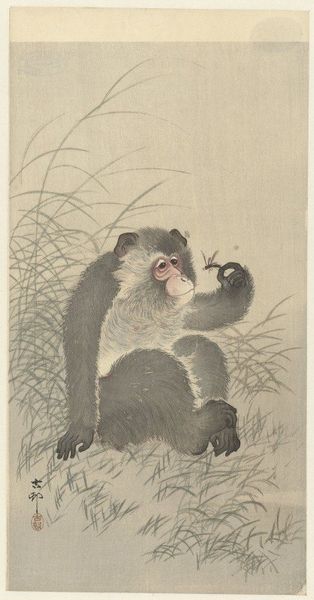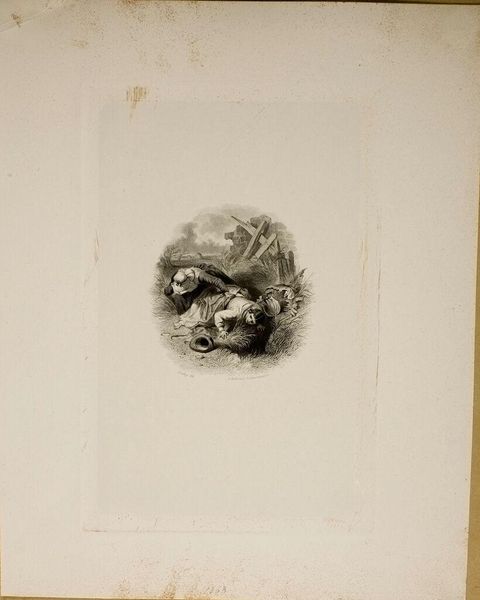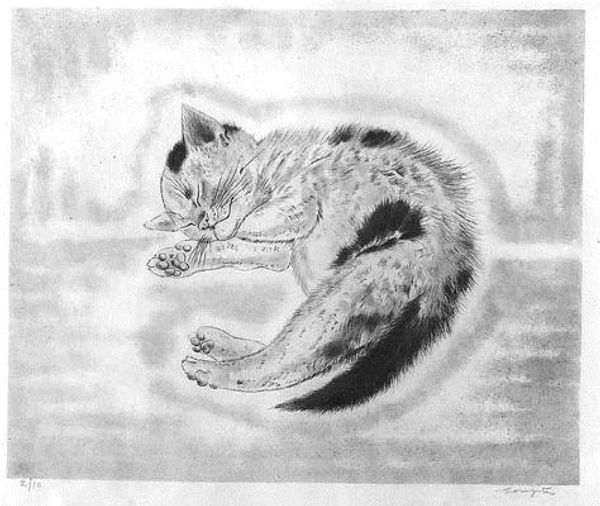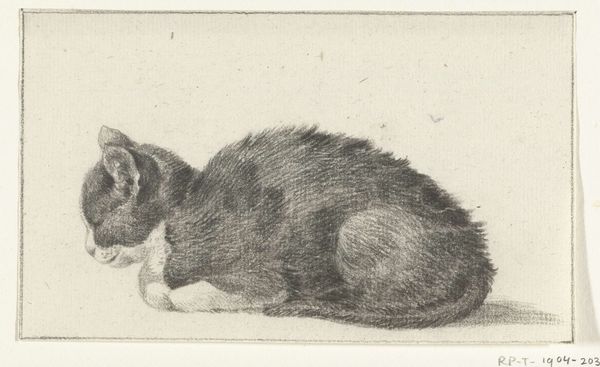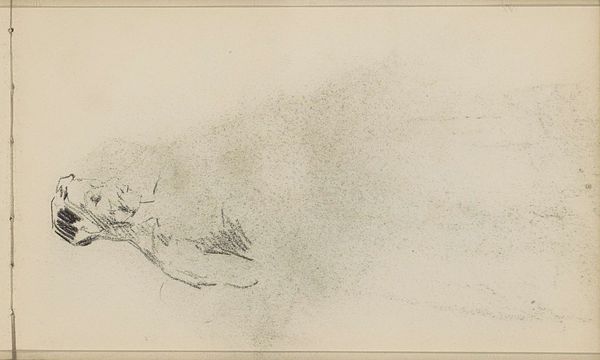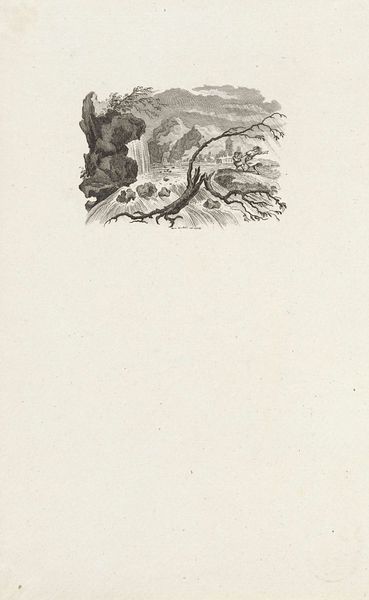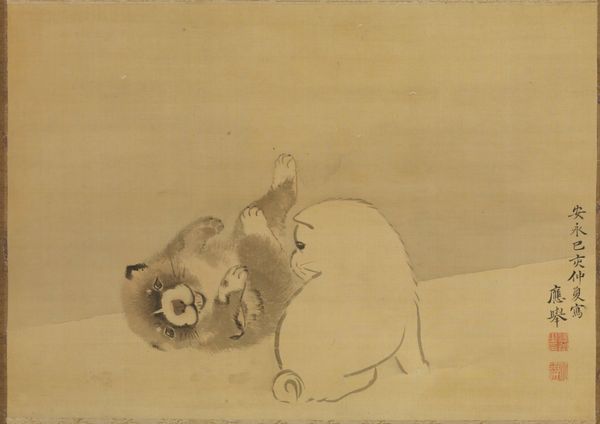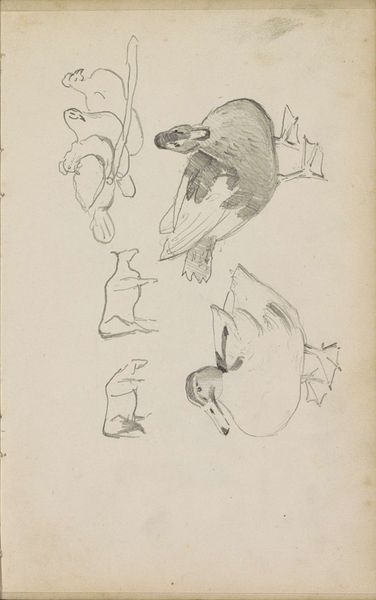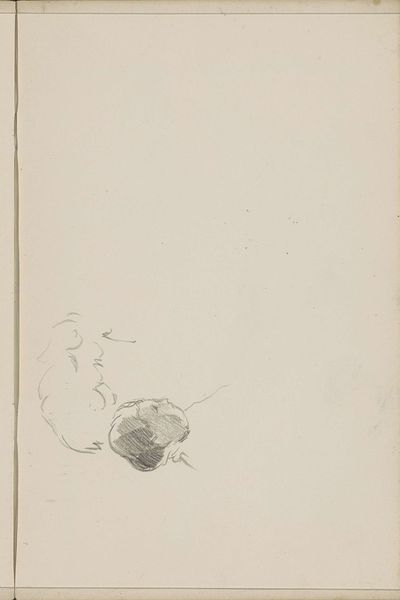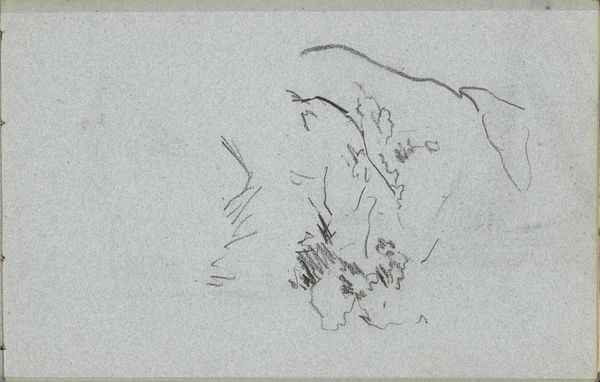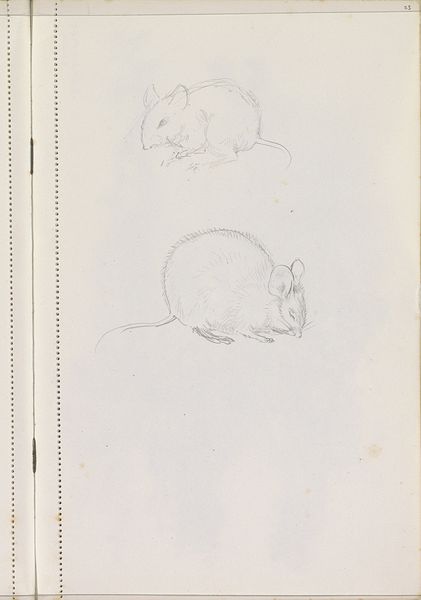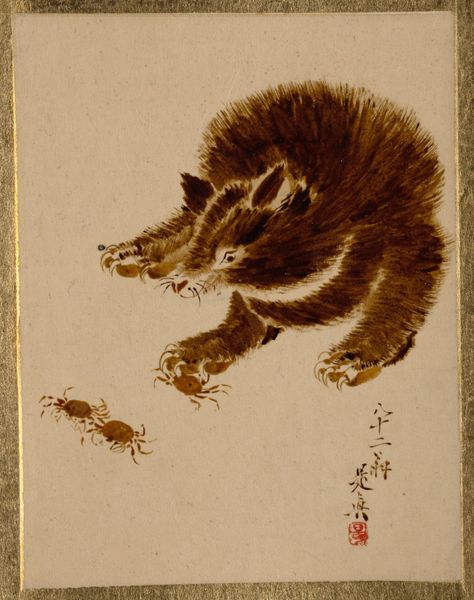
drawing, charcoal
#
portrait
#
drawing
#
asian-art
#
landscape
#
charcoal drawing
#
japan
#
pencil drawing
#
animal drawing portrait
#
charcoal
Dimensions: 10 1/8 × 9 11/16 in. (25.72 × 24.61 cm) (image)46 × 15 3/8 in. (116.84 × 39.05 cm) (mount, without roller)
Copyright: No Copyright - United States
Curator: Konoshima Ōkoku's "Old Raccoon," from the early 20th century, graces us with its subtle charm. This piece, rendered in charcoal, captures a unique intersection of portraiture and landscape. Editor: My immediate reaction is one of subdued whimsy. The tonal range is delicate, almost monochromatic, giving the creature a spectral presence. There’s a stark simplicity in its composition. Curator: Indeed. Consider the sociopolitical context of early 20th-century Japan. The push for modernization impacted traditional art forms, leading to a fascinating blend of styles and subject matter. This piece reflects that moment. How were animals portrayed in popular culture at the time, and how might that influence the artist's depiction? Editor: Structurally, I’m struck by the negative space. The raccoon isn’t overtly situated within a detailed setting, more suggested with minimalistic strokes implying a grassy foreground, blurring the line between foreground and background, creating a liminal feel. Curator: Precisely. Also important is understanding that Japanese art emphasized harmony with nature and cultural identity. This depiction of a seemingly mundane animal elevated to artistic subject could suggest the deep relationship with naturalism at the time. Editor: Note the deliberate soft focus. Ōkoku seems less concerned with precise anatomical accuracy and more interested in evoking a certain…ethereal quality. The application of charcoal lends itself beautifully to the texture of fur, inviting haptic imagination despite the monochrome palette. Curator: I agree. By analyzing Ōkoku’s creative output alongside those shifting social dynamics, it helps deepen our insight into artistic sensibilities of the era and what they valued in the natural world. Editor: Looking closely, the marks aren’t just descriptive; they seem expressive. They convey more than shape; there is emotion in the lines around its face. Ultimately, "Old Raccoon" serves not just as a representation but as a statement about our relationship to the observed world. Curator: Seeing the subtle ways artists integrated nature, tradition, and identity reminds me about the influence artworks have on understanding cultural changes and our collective place within this ever changing sphere. Editor: A wonderfully layered piece. By paying attention to line, texture, and composition, one might begin appreciating the formal construction supporting those more expansive readings.
Comments
No comments
Be the first to comment and join the conversation on the ultimate creative platform.

